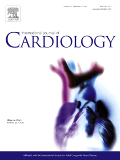Sanchis-Gomar F, et al.
BACKGROUND: The impact of high exercise loads on a previously healthy heart remains controversial. We examined the consequences of decades of strenuous endurance exercise at the highest competition level on heart dimensions and volumes as well as on serum biomarkers of cardiac fibrosis/remodeling.
METHODS AND RESULTS: We compared echocardiographic measurements and serum biomarkers of cardiac fibrosis/remodeling [troponin I, galectin-3, matrix metallopeptidase-2 and -9, N-terminal pro-brain natriuretic peptide, carboxy-terminal propeptide of type I procollagen, and soluble suppressor of tumorigenicity-2 (sST-2)/interleukin(IL)-1R4] in 53 male athletes [11 former professional (‘elite’) and 42 amateur-level (‘sub-elite’) cyclists or runners, aged 40-70years] and 18 aged-matched controls. A subset of 15 subjects (5 controls, 3 sub-elite and 7 elite athletes) also underwent cardiac magnetic resonance imaging (cMRI). Elite and sub-elite athletes had greater echocardiography-determined left ventricular myocardial mass indexed to body surface area than controls (113±22, 115.2±23.1 and 94.8±21g/m2, respectively, p=0.008 for group effect), with similar results for left (50.5±4.4, 48.2±4.3 and 46.4±5.2mm, p=0.008) and right (38.6±3.8, 41.1±5.5 and 34.7±4.3mm, p<0.001) ventricular end-diastolic diameter, and cMRI-determined left atrial volume indexed to body surface area (62.7±8.1, 56.4±16.0 and 39.0±14.1ml/m2, p=0.026). Two athletes showed a non-coronary pattern of small, fibrotic left ventricular patches detected by late gadolinium enhancement. No group effect was noted for biomarkers.
CONCLUSIONS: Regardless of their competition level at a younger age, veteran endurance athletes showed an overall healthy, non-pathological pattern of cardiac remodeling. Nonetheless, the physiopathology of the ventricular fibrotic patches detected warrants further investigation.
Article in PDF (for private use only)



